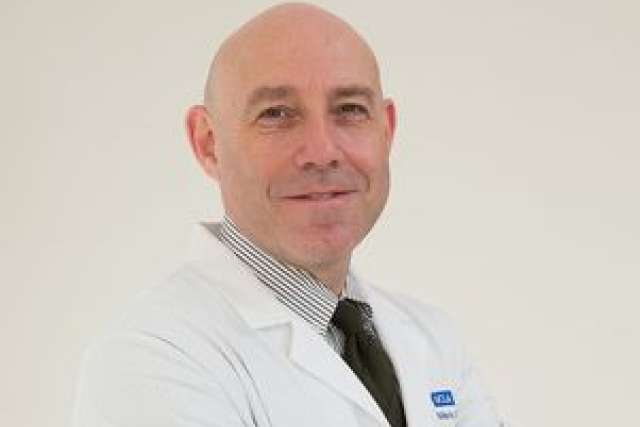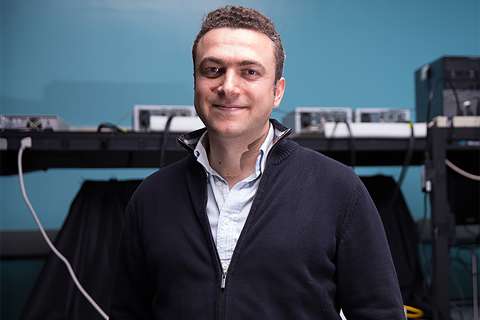A rigorous, long-term study of quality of life in patients who underwent one of the three most common treatments for prostate cancer found that each affected men's lives in different ways. The findings provide invaluable information for men with prostate cancer who are facing vital treatment decisions.
Researchers studied quality of life in men who either underwent radical prostatectomy, implantation of radioactive seeds in their prostate gland or had external beam radiation therapy. The three treatment options rank about equally in survival outcomes for most men, so specific impacts on quality of life become paramount in making treatment decisions, said Dr. Mark Litwin, the study's lead author and a researcher at UCLA's Jonsson Cancer Center.
"The good news is that overall mental and physical well-being were not profoundly affected by any of the three treatment choices," Litwin said. "That's good news for men with the sword of prostate cancer hanging over their heads. In general, they'll be OK no matter which of the three options they choose."
However, each of the three options did negatively affect quality of life, at least temporarily, with problems ranging from erectile dysfunction and minor incontinence to urinary and bowel irritation.
The study tracked 580 men for five years. The study results, published in the June 1, 2007 issue of the peer-reviewed journal CANCER, represent data from the first two years of the study. Those years, Litwin said, are when most of the negative impacts surface and resolve.
Seed implantation, also known as brachytherapy, has been touted in marketing campaigns as the best of the three options with the shortest recovery time and the fewest sexual dysfunction side effects, Litwin said.
"These campaigns say 'Get your seed implants on Monday, play golf on Tuesday' and that's just not true," said Litwin, a professor of urology and health services. "Men need to have the most accurate information when making vital decisions about what type to treatment they'll get.. They need facts, not hype."
The study found that brachytherapy patients often experience obstructive and irritating urinary symptoms such as frequency of urination and feeling an urgent need to urinate. They also reported bowel dysfunction such as frequency and urgency, diarrhea and pain with stool. External beam radiation patients suffered from urinary irritation and bowel dysfunction similar to brachytherapy patients.
Surgery patients more often reported incontinence symptoms such as urine leakage when coughing or sneezing as well loss of sexual dysfunction, although this was mitigated when the surgeon was able to spare the patient's erectile nerves.
The impacts caused by brachytherapy and external beam radiation were most similar and patients who choose those options suffered less erectile dysfunction. While they had more erectile dysfunction, surgery patients did not suffer from bowel dysfunction as often.
"Different men are bothered by different things, so it depends on what their baseline function is," Litwin said. "If a man is already impotent, for example, loss of sexual function won't be an issue in making a treatment decision."
Litwin said the study is unique in that it took baseline measurements before the patients, all cared for at UCLA, underwent any treatment. It did not ask patients to recall what their function and quality of life were prior to treatment, as many studies do. That resulted in a more accurate baseline measurement, Litwin said. The study also was unique in that it assessed and tracked individuals using their own baselines, not a "mean" or "median" ranking determined by looking at group statistics.
"This is important because these treatments can have significant effects on sexual, urinary and bowel function," Litwin said. "It's critical to be able to say as accurately as possible what percentage of men got back to the pre-treatment baseline, as well as the percentage that did not. This information helps the next man that comes along. He can use the data to weigh his chances of returning to his own pre-treatment baseline in terms of function and quality of life."
Additionally, the study used the most rigorous methodology available and employed established instruments to measure quality of life factors, tools that have been used for years on thousands of patients from around the world and "are known to be valid measurements," Litwin said. The data also were collected by a third party, not the surgeon or radiation oncologist involved in the treatment. That also allowed for collection of more accurate information.
"Patients have an unconscious desire to please their doctor and we wanted to ensure they were as forthcoming as possible in discussing problems related to their treatment," Litwin said.
The study also was novel in that is used a specially designed web-based data collection system that allowed participants to complete surveys online.
Litwin and his team will continue to analyze the study data out through the five-year point. However, he expects little to change as most symptoms surface early on and typically begin to improve after the two-year mark.
Litwin said it is important for men to make treatment decisions based on their individual needs. It's also vital, he said, to find the best doctor to administer the treatment.
"The experience of the doctor and the institution do matter," he said. "Results can vary."
Prostate Cancer is the most frequently diagnosed cancer in men and the leading cause of cancer death in men. About 218,890 cases of prostate cancer will be diagnosed this year alone, according to the American Cancer Society. About 27,050 men will die.
Common Prostate Cancer Treatments Impact on a Patient's Quality of Life

Dr. Mark Litwin
Related Content
Articles:
Physician
Share:



